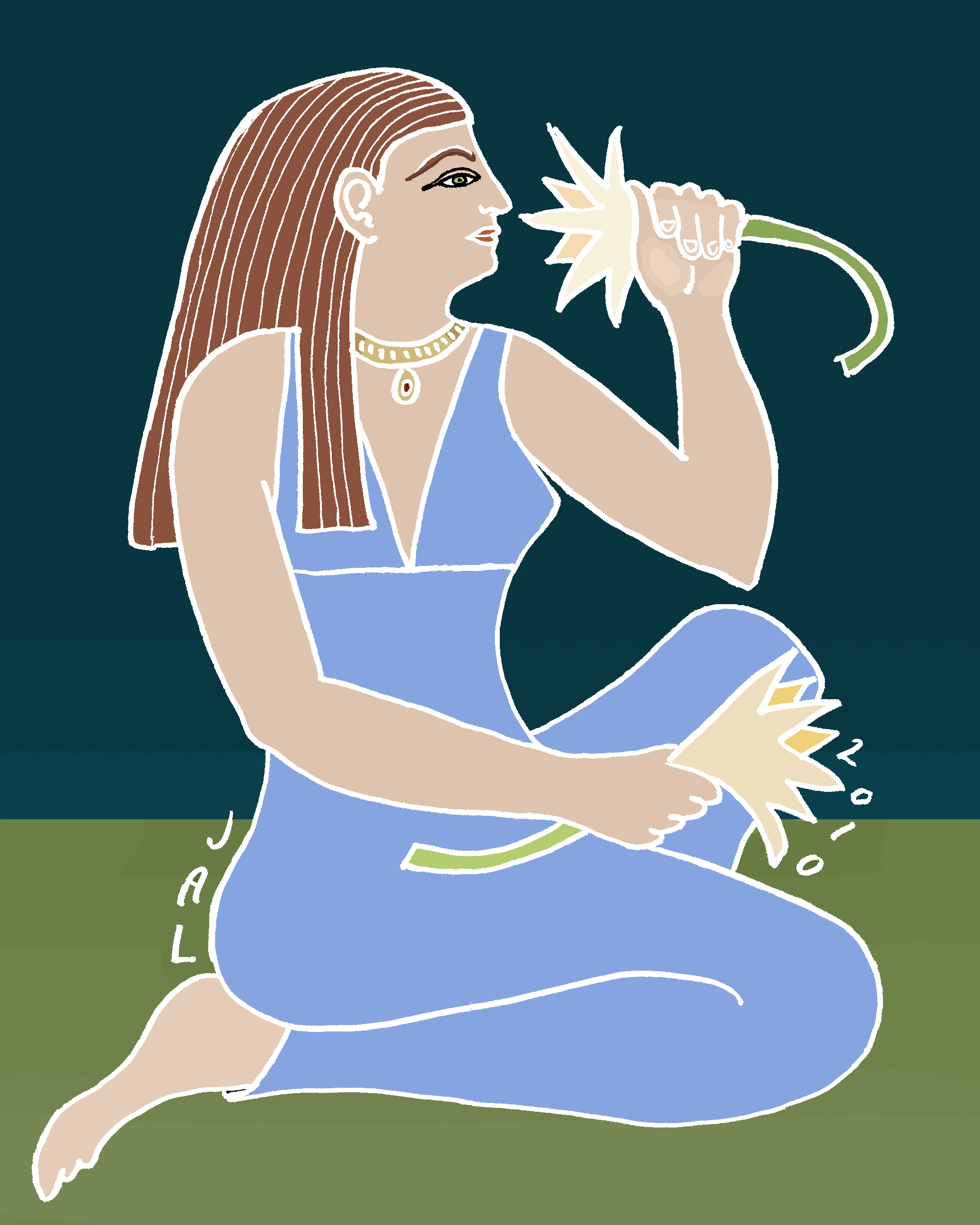
Inhale deeply the sweet perfume of life...
 |
©Joan Ann Lansberry, 5-8-2010 - 8-6-2022

 |
©Joan Ann Lansberry, 5-8-2010 - 8-6-2022
|
This is based on a 4th Dynasty 'lotus' sniffer at the Metropolitan Museum. I took Niankhwadjet's torso and combined it with Isis' leg pose. To give her right arm something graceful to do, I gave her another lotus to hold and possibly offer. The information accompanying the relief says the scent of a lotus is associated with rebirth because the flower opens each morning for the sun. Bridget McDermott in Decoding Egyptian Hieroglyphs informs us further: "The lotus had an important symbolic role in religious life. The blue lotus, which opens with the first rays of the sun, and the white lotus, which opens only at night, were associated with the sun and moon, and the opposing forces of light and dark...The lotus became a symbol of rebirth after death" and is "also linked to fertility and was a sexual symbol." But as I recall reading in the KMT magazine, 'lotus' is really a misnomer, the flower is really a water lily. Geri Harrington confirms this recollection, "The Egyptian lotus (Nymphaea lotus) is actually a water lily and looks different from the Chinese or sacred lotus (Nelumbo nucifera).", (_Growing Chinese Vegetables in Your Own Backyard_, page 162). And here is a beautiful "lotus" from the Third Intermediate Period, which I photographed at the Met Museum: |


